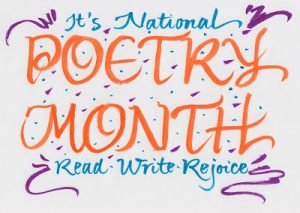If we can learn anything from ChatGPT and all other AI tools, it is that their product is the result of people who immersed themselves in the process of collecting information before arriving at the final product. The secret to success is what took place behind the scenes —the work it took to arrive at the final product.
Continue readingTag Archives: writing
Activity: Journal Writing
When I started teaching online, it was clear to me almost immediately that I wanted to encourage my learners to write and that I wanted to see their writing on a regular basis. I had a CLB 7 Academic class, and I began rather naively and ambitiously. The assignment was straightforward:
You will have three journal topics a week. You will be given 15 minutes a day, three times a week, to write in your journal. You will be given a journal topic or you can write about whatever you want.
Continue readingAI in the Classroom: Love It or Hate It – It’s Here
Learning never stops; this now includes both humans and Artificial Intelligence. As I type this blog post, I find myself either tabbing to accept the suggested word or ignoring the suggestion. Being prompted to type what auto-text thinks I should be writing can be annoying and, if I am not careful, I end up writing a word that I did not mean to write or, worse yet, pressing ‘send’ on a message or email with one or two unintended words. Although I appreciate its usefulness on some occasions, it irks me when I am given the wrong suggestion, as in the case of Grammarly’s use of double commas on a salutation (since when did adding a comma after ‘Hello’ or ‘Hi’ and before someone’s name become the grammar norm?)
Continue readingSummary of the #English Language Skills discussion with Cecilia Aponte-de-Hanna, OCELT
Post by: Cecilia Aponte-de-Hanna and Vanessa Nino
On April 30, 2021 people in the TESL Ontario community discussed teaching the English language skills on Twitter. The guest moderator of the evening was Cecilia Aponte-de-Hanna (@capontedehanna). Cecilia is a full-time professor at Centennial College, where she teaches English communications courses to local and international students. With over 15 years of teaching experience, Cecilia has taught children as young as 3 years old to adults in their golden years.
Continue readingReflective Writing for Students and Teachers
Channel Your Thoughts

The educational reformer and philosopher John Dewey once said, “We do not learn from experience… we learn from reflecting on experience.” If, like me, you agree with him, you may find this post on reflective writing meaningful.
It is important to note that writing reflectively does not have to involve only one area of your life. You should be open to write about anything you want, knowing it is going to be for you and your benefit only. It does not really matter what you write about. The key is reflection to enhance mindfulness.
Continue readingTeach Writing with a Web Design Project

One of my courses specifies that students create a presentation on an educational resource and present it to their peers. The following is a model I’d like to share with you as a potential means of using a common theme with a final presentation as a way of promoting inquiry, research, collaboration, communication, planning, and writing within one term of instruction. The project comprises eight separate activities. Each activity involves the students practicing language and social skills in a variety of ways. These steps are detailed below in the section, Project Process. Continue reading
April is Poetry Month!
 Happy Monday TESL ON members! Did you know that April is National Poetry Month? I don’t know about you, but I love poetry! Although most of us may not use it very much to teach English to our students, many are aware that it can be a good way to teach the rhythm of English. However, I think there are so many more ways that we could use this rich form of the English language. Continue reading
Happy Monday TESL ON members! Did you know that April is National Poetry Month? I don’t know about you, but I love poetry! Although most of us may not use it very much to teach English to our students, many are aware that it can be a good way to teach the rhythm of English. However, I think there are so many more ways that we could use this rich form of the English language. Continue reading
The Translingual Approach – Agree but…

I am trying to fully understand the translingual approach – specifically how it aligns with English for academic purposes (EAP) or the much needed skill of clear, concise written communication. The idea is great, but how do we go about it?
Horner, Lu, Royster, and Trimbur (2011) propose a translingual approach for dealing with student writing in academia.
Although I agree with most of the underpinnings behind the new approach, I am not so sure how they envision it. I agree with many of their ideas, but…
Agree
I agree that students’ right to use their language (English and otherwise) should be respected. I also agree with the authors’ opposition to the monolingual “view that varieties of English other than those recognized as ‘standards’ are defective” (305). Varieties of English, they explain, include what monolinguals Continue reading
Cool Tools – Collaborating with Padlet

Are you looking for a useful tool to facilitate collaborative work for your students? For the past year, I have been exploring the use of Padlet, a free online application that serves as a ‘multi-media friendly, free-form, real-time wiki’ (according to Padlet.com). This easy to use tool allows you to easily provide content for your students online and customize it in many creative ways.
In a nutshell, Padlet works like a digital bulletin board or canvas. Once you have created your free account at https//:padlet.com, you can create individual ‘walls’ or padlets on which you can place content. An unlimited number of users can contribute to a padlet at the same time, making collaborative work very easy. By double-clicking anywhere on the screen, you can insert text, video, documents, images, or other padlets. Your padlet with all of its content can then be shared with your students via email, link, or on social media. Continue reading
How do I write faster?

A typical conversation that I have with students near the beginning of a semester goes like this:
Me: How are things going? What would you like to do today?
Student: Ugh I have so many assignments you know, and I have to study a lot and write so many papers. It took me a long time to write this essay… like 6, 7 days. That’s too much. Please teach me how to write faster.
Me: Writing essays takes me a long time, too.
Student: No. It can’t take you this long… you are a professional and English is your first language. I want to write essays in maybe 4 hours total.
For many students, this request is a very logical one. How do they juggle the multitude of assignments in a 14 or 15 week semester? Writing faster is more efficient and beneficial to them than not writing at all. After all these years, I still don’t have a clear answer because I can’t even write a 10 page paper in 4 hours. Once we get through the initial conversation, here are some strategies I do provide: Continue reading




